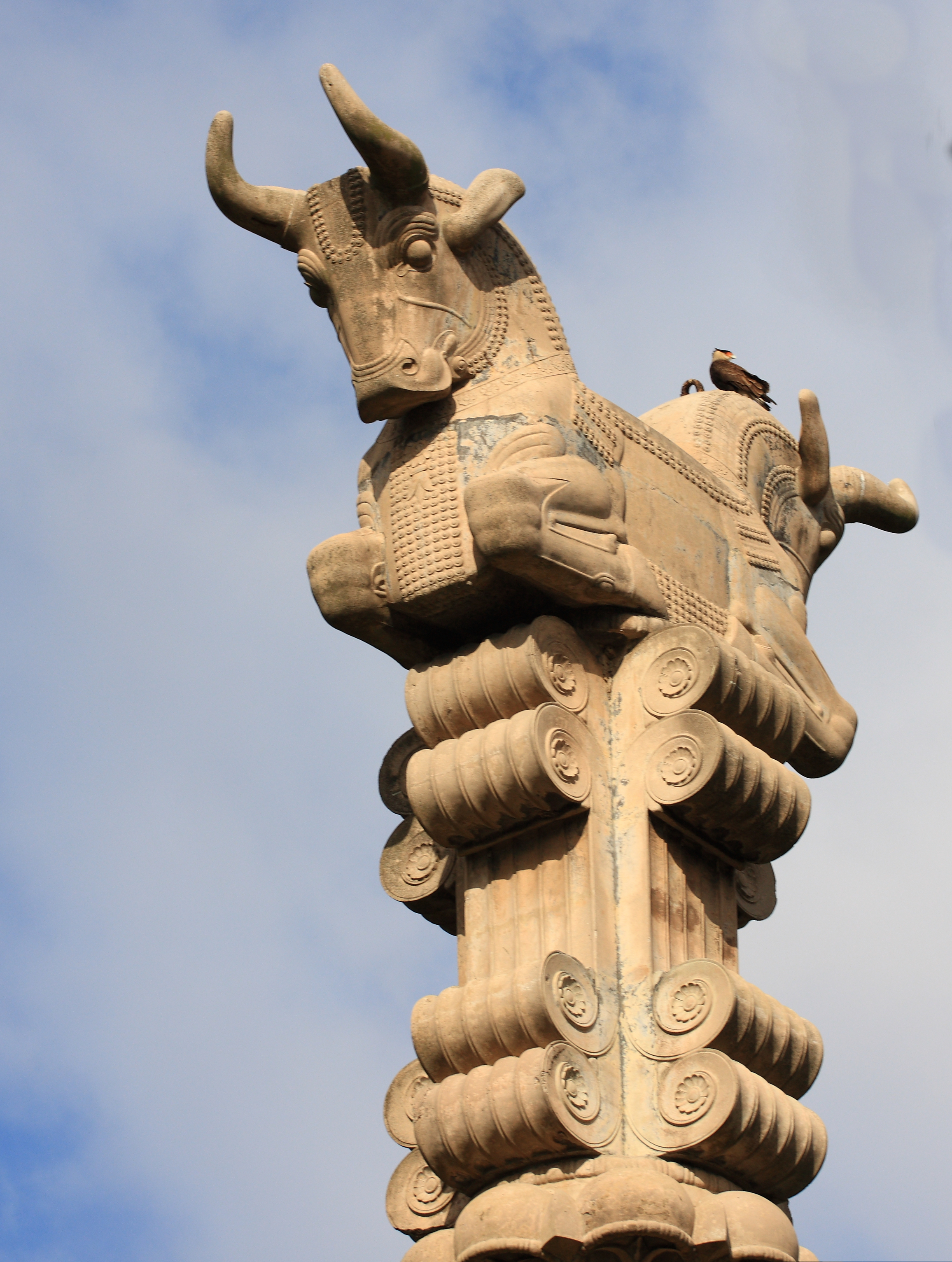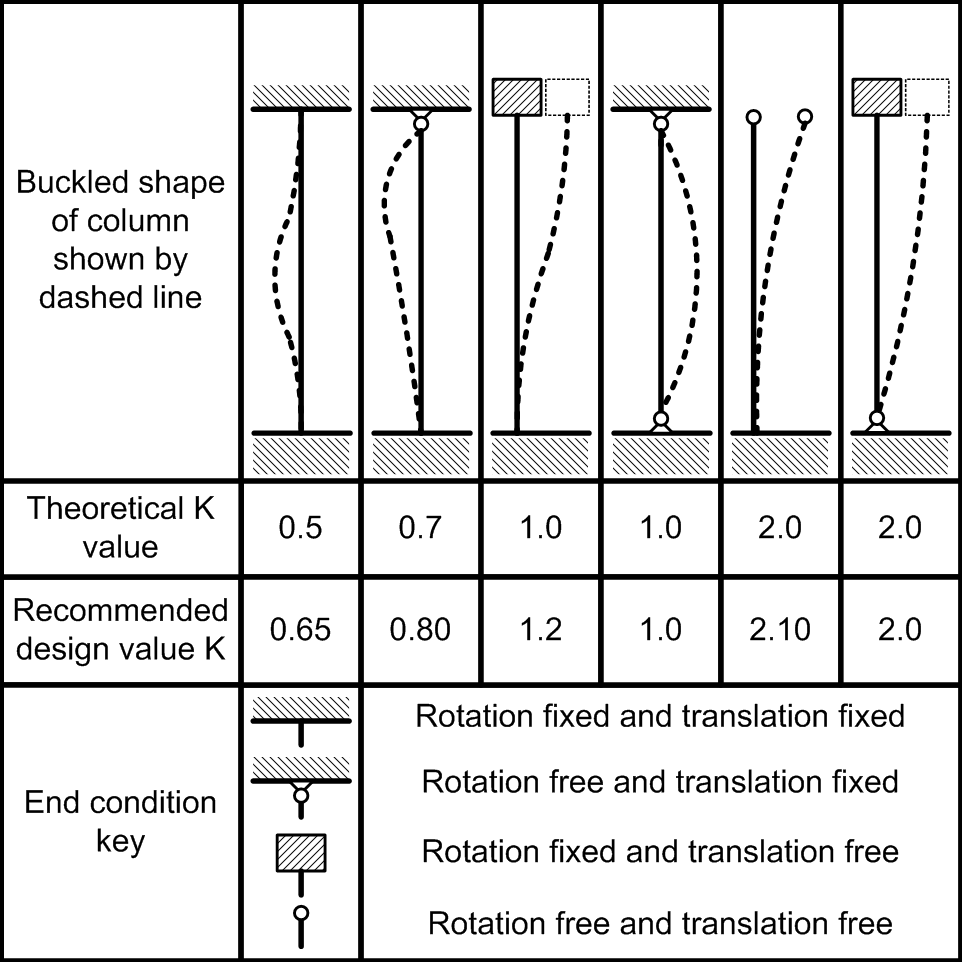|
Pilaster
In architecture, a pilaster is both a load-bearing section of thickened wall or column integrated into a wall, and a purely decorative element in classical architecture which gives the appearance of a supporting column and articulates an extent of wall. As an ornament it consists of a flat surface raised from the main wall surface, usually treated as though it were a column, with a capital at the top, plinth (base) at the bottom, and the various other column elements. In contrast to a Classical pilaster, an engaged column or buttress can support the structure of a wall and roof above. In human anatomy, a pilaster is a ridge that extends vertically across the femur, which is unique to modern humans. Its structural function is unclear. Definition A pilaster is foremost a load-bearing architectural element used widely throughout the world and its history where a structural load is carried by a thickened section of wall or column integrated into a wall. It is also a purel ... [...More Info...] [...Related Items...] OR: [Wikipedia] [Google] [Baidu] |
Renaissance Architecture
Renaissance architecture is the European architecture of the period between the early 15th and early 16th centuries in different regions, demonstrating a conscious revival and development of certain elements of Ancient Greece, ancient Greek and Ancient Rome, Roman thought and material culture. Stylistically, Renaissance architecture followed Gothic architecture and was succeeded by Baroque architecture and neoclassical architecture. Developed first in Florence, with Filippo Brunelleschi as one of its innovators, the Renaissance style quickly spread to other Italian cities. The style was carried to other parts of Europe at different dates and with varying degrees of impact. It began in Florence in the early 15th century and reflected a revival of classical Greek and Roman principles such as symmetry, proportion, and geometry. This movement was supported by wealthy patrons, including the Medici family and the Catholic Church, who commissioned works to display both religious devot ... [...More Info...] [...Related Items...] OR: [Wikipedia] [Google] [Baidu] |
Capital (architecture)
In architecture, the capital () or chapiter forms the topmost member of a column (or a pilaster). It mediates between the column and the load thrusting down upon it, broadening the area of the column's supporting surface. The capital, projecting on each side as it rises to support the abacus, joins the usually square abacus and the usually circular shaft of the column. The capital may be convex, as in the Doric order; concave, as in the inverted bell of the Corinthian order; or scrolling out, as in the Ionic order. These form the three principal types on which all capitals in the classical tradition are based. The Composite order was formalized in the 16th century following Roman Imperial examples such as the Arch of Titus in Rome. It adds Ionic volutes to Corinthian acanthus leaves. From the highly visible position it occupies in all colonnaded monumental buildings, the capital is often selected for ornamentation; and is often the clearest indicator of the architec ... [...More Info...] [...Related Items...] OR: [Wikipedia] [Google] [Baidu] |
Leon Battista Alberti
Leon Battista Alberti (; 14 February 1404 – 25 April 1472) was an Italian Renaissance humanist author, artist, architect, poet, Catholic priest, priest, linguistics, linguist, philosopher, and cryptography, cryptographer; he epitomised the nature of those identified now as polymaths. He is considered the founder of European cryptography, a claim he shares with Johannes Trithemius. He is often considered primarily an architect. However, according to James Beck, "to single out one of Leon Battista's 'fields' over others as somehow functionally independent and self-sufficient is of no help at all to any effort to characterize Alberti's extensive explorations in the fine arts". Although Alberti is known mostly as an artist, he was also a mathematician and made significant contributions to that field. Among the most famous buildings he designed are the churches of San Sebastiano (1460) and Sant'Andrea (1472), both in Mantua. Alberti's life was told in Giorgio Vasari's ''Lives of t ... [...More Info...] [...Related Items...] OR: [Wikipedia] [Google] [Baidu] |
Giant Order
In classical architecture, a giant order, also known as colossal order, is an order whose columns or pilasters span two (or more) storeys. At the same time, smaller orders may feature in arcades or window and door framings within the storeys that are embraced by the giant order. The giant order was rare in antiquity. Vitruvius' depiction of the lost Basilica of Fanum contains columns spanning two stories. Roman architectural historian Mark Wilson Jones also cites the columns at the Basilica of Pompeii, the Baths of Diocletian, and the Temple of Baachus at Baalbek as early examples of the giant order. To an extent buildings with giant orders resemble a Roman temple adapted for post-classical use, as many were (the survivors have now usually been stripped of later filling-in). In Renaissance and Beaux-Arts architecture One of the earliest uses of this feature in the Renaissance was at the Basilica of Sant'Andrea, Mantua, designed by Leon Battista Alberti and begun in 1472; this ... [...More Info...] [...Related Items...] OR: [Wikipedia] [Google] [Baidu] |
Ornament (art)
In architecture and decorative art, ornament is decoration used to embellish parts of a building or object. Large figurative elements such as monumental sculpture and their equivalents in decorative art are excluded from the term; most ornaments do not include human figures, and if present they are small compared to the overall scale. Architectural ornament can be carved from stone, wood or precious metals, formed with plaster or clay, or painted or impressed onto a surface as applied ornament; in other applied arts the main material of the object, or a different one such as paint or vitreous enamel may be used. A wide variety of decorative styles and Motif (visual arts), motifs have been developed for architecture and the applied arts, including pottery, furniture, metalwork. In textiles, wallpaper and other objects where the decoration may be the main justification for its existence, the terms pattern or design are more likely to be used. The vast range of motifs used in orna ... [...More Info...] [...Related Items...] OR: [Wikipedia] [Google] [Baidu] |
Italian Renaissance
The Italian Renaissance ( ) was a period in History of Italy, Italian history between the 14th and 16th centuries. The period is known for the initial development of the broader Renaissance culture that spread across Western Europe and marked the transition from the Middle Ages to modernity. Proponents of a "long Renaissance" argue that it started around the year 1300 and lasted until about 1600. In some fields, a Italian Renaissance painting#Proto-Renaissance painting, Proto-Renaissance, beginning around 1250, is typically accepted. The French word (corresponding to in Italian) means 'rebirth', and defines the period as one of cultural revival and renewed interest in classical antiquity after the centuries during what Renaissance humanism, Renaissance humanists labelled as the Dark Ages (historiography), "Dark Ages". The Italian Renaissance historian Giorgio Vasari used the term ('rebirth') in his ''Lives of the Most Excellent Painters, Sculptors, and Architects'' in 1550, bu ... [...More Info...] [...Related Items...] OR: [Wikipedia] [Google] [Baidu] |
Column
A column or pillar in architecture and structural engineering is a structural element that transmits, through compression, the weight of the structure above to other structural elements below. In other words, a column is a compression member. The term ''column'' applies especially to a large round support (the shaft of the column) with a capital and a base or pedestal, which is made of stone, or appearing to be so. A small wooden or metal support is typically called a '' post''. Supports with a rectangular or other non-round section are usually called '' piers''. For the purpose of wind or earthquake engineering, columns may be designed to resist lateral forces. Other compression members are often termed "columns" because of the similar stress conditions. Columns are frequently used to support beams or arches on which the upper parts of walls or ceilings rest. In architecture, "column" refers to such a structural element that also has certain proportional and decorative f ... [...More Info...] [...Related Items...] OR: [Wikipedia] [Google] [Baidu] |
Entablature
An entablature (; nativization of Italian , from "in" and "table") is the superstructure of moldings and bands which lies horizontally above columns, resting on their capitals. Entablatures are major elements of classical architecture, and are commonly divided into the architrave (the supporting member immediately above; equivalent to the lintel in post and lintel construction), the frieze (an unmolded strip that may or may not be ornamented), and the cornice (the projecting member below the pediment). The Greek and Roman temples are believed to be based on wooden structures, the design transition from wooden to stone structures being called petrification. Overview The structure of an entablature varies with the orders of architecture. In each order, the proportions of the subdivisions (architrave, frieze, cornice) are defined by the proportions of the column. In Roman and Renaissance interpretations, it is usually approximately a quarter of the height of the column. Va ... [...More Info...] [...Related Items...] OR: [Wikipedia] [Google] [Baidu] |
Greek Revival Architecture
Greek Revival architecture is a architectural style, style that began in the middle of the 18th century but which particularly flourished in the late 18th and early 19th centuries, predominantly in northern Europe, the United States, and Canada, and Greece following that nation's independence in 1821. It revived many aspects of the forms and styles of ancient Greek architecture, including the Greek temple. A product of Hellenism (neoclassicism), Hellenism, Greek Revival architecture is looked upon as the last phase in the development of Neoclassical architecture, which was drawn from Roman architecture. The term was first used by Charles Robert Cockerell in a lecture he gave as an architecture professor at the Royal Academy of Arts in London in 1842. With newfound access to Greece and Turkey, or initially to the books produced by the few who had visited the sites, archaeologist–architects of the period studied the Doric order, Doric and Ionic order, Ionic orders. Despite its un ... [...More Info...] [...Related Items...] OR: [Wikipedia] [Google] [Baidu] |
Plinth
A pedestal or plinth is a support at the bottom of a statue, vase, column, or certain altars. Smaller pedestals, especially if round in shape, may be called socles. In civil engineering, it is also called ''basement''. The minimum height of the plinth is usually kept as 45 cm (for buildings). It transmits loads from superstructure to the substructure and acts as the retaining wall for the filling inside the plinth or raised floor. In sculpting, the terms base, plinth, and pedestal are defined according to their subtle differences. A base is defined as a large mass that supports the sculpture from below. A plinth is defined as a flat and planar support which separates the sculpture from the environment. A pedestal, on the other hand, is defined as a shaft-like form that raises the sculpture and separates it from the base. An elevated pedestal or plinth that bears a statue, and which is raised from the substructure supporting it (typically roofs or corniches), is some ... [...More Info...] [...Related Items...] OR: [Wikipedia] [Google] [Baidu] |
Column
A column or pillar in architecture and structural engineering is a structural element that transmits, through compression, the weight of the structure above to other structural elements below. In other words, a column is a compression member. The term ''column'' applies especially to a large round support (the shaft of the column) with a capital and a base or pedestal, which is made of stone, or appearing to be so. A small wooden or metal support is typically called a '' post''. Supports with a rectangular or other non-round section are usually called '' piers''. For the purpose of wind or earthquake engineering, columns may be designed to resist lateral forces. Other compression members are often termed "columns" because of the similar stress conditions. Columns are frequently used to support beams or arches on which the upper parts of walls or ceilings rest. In architecture, "column" refers to such a structural element that also has certain proportional and decorative f ... [...More Info...] [...Related Items...] OR: [Wikipedia] [Google] [Baidu] |








